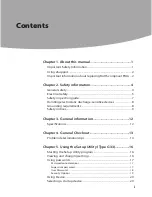
6 #3577 ©2003
IDC
F I G U R E 1
WORLDWIDE ECOMMERCE SPENDING BY TYPE, 2000–2003
0
200
400
600
800
1,000
1,200
1,400
1,600
2000
2001
2002
2003
($
B
)
B2B
B2C
Source: IDC's
Internet Commerce Market Model
version 8.1, February 2002
Authorities in the United States recently cracked the case of a professional hacker
based in the United Kingdom who had access to about 100 unclassified military
networks during most of 2002. The case, which had been considered a high priority
for a year, despite the unclassified nature of the networks, was a focus because of
the skill of the hacker, who was finally snared. Although the exposed data was not
particularly sensitive, the determination and talent of the hacker led authorities to
believe that it would be only a matter of time before he uncovered something
valuable. Among sites he was able to enter were the Pentagon Picatiny Arsenal in
New Jersey, one of the Army's most delicate research facilities. And he was in the
process of unfolding a multistage attack, the sign of a highly sophisticated hacker, at
the time of his arrest.
In a case involving far greater value, two Russian hackers were lured to the United
States by federal agents on the pretext of a commercial interest. Once in Seattle, they
were arrested. But until that moment, they had been engaged in an operation that had
hacked into banks and ecommerce sites and extorted the operators for money with
the promise of not revealing the hacks to the public. Sometimes the value of
reputation damage is difficult to assess, but it may represent the entire value of the
business. Another Russian hacker was monitored for years as he downloaded
millions of pages of sensitive data from defense department computers, including one
colonel's email inbox.
Aiding and abetting the rise in attacks, the collective pool of hacking knowledge has
risen. Hackers often trade schemes and software via Internet Relay Chat, better
known by its initials, IRC, one of the least-regulated areas of the Internet and one that
allows anonymous contact at the user's discretion. The packets flow to everywhere
from everywhere. And although more policed areas of the Internet exist (e.g., AOL
and other "communities" in cyberspace), the underlying structure still relies on real-
time routing, and packet spoofing makes it possible for someone to conceal his
whereabouts, particularly if he comes from a number of directions at once.
Aiding and abetting
the rise in attacks,
the collective pool of
hacking knowledge
has risen. Hackers
often trade schemes
and software via
Internet Relay Chat,
better known by its
initials, IRC, one of
the least-regulated
areas of the Internet
and one that allows
anonymous contact at
the user's discretion.

































